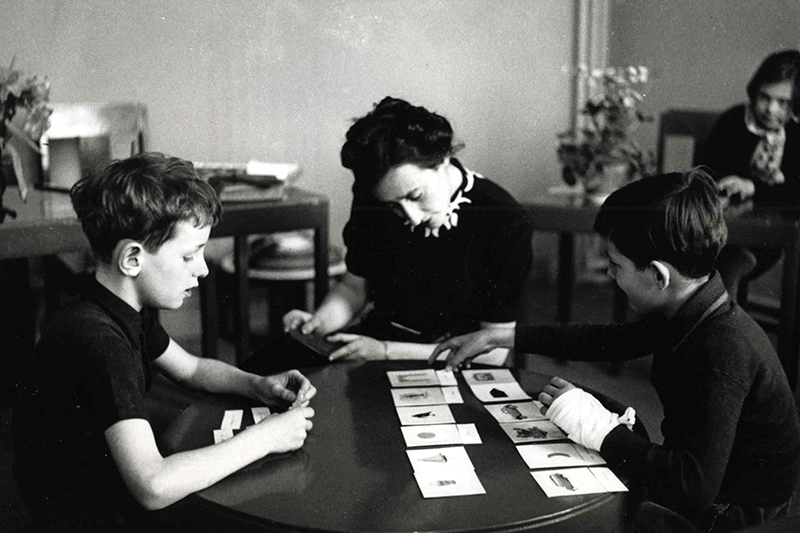
A Closer Look At School Options
Written by James Kicinski-McCoy
Photography by Photo via Eagle Peak Montessori
There comes a time in every parent’s life when it’s time to think about sending your kids off to school. This can be an overwhelming thought, especially given the many different education options, tuition costs, and more. Here, we break down some of the popular teaching styles and school options that are commonly found in most cities, to help make the big decision a little easier.
Public. This is the most widely-known education, probably because it’s free schooling for both primary and secondary schools. It’s managed either by the government, a council, public education agency, or committee. This type of schooling ensures that children of all backgrounds can achieve a proper education, regardless of their family’s income. Public education (sometimes) tends to get a bad wrap for having a one-size-fits-all learning method, where gifted students aren’t able to advance or slower-learning students can feel left behind. However, public schooling is now shifting to customized learning methods as much as possible. Kids begin public school in kindergarten and attend until they graduate.
Private. Also known as individual, non-governmental, or non-state schools, this form of education differs from public schooling in the sense that it is an elementary or secondary school that is paid for and supported by parents or private individuals instead of the government. These schools have the right to charge a tuition and not just anyone can attend a public school. Some students may be able to get a scholarship, making the tuition more affordable. The pro to private schooling is an advanced curriculum, differentiated learning, and special programs, where as public schools must follow specific regulations. The con is that tuitions can get pretty pricey, ranging from $11K-$20K+ per school year. Private school enrollment starts at Pre-K and goes through grade 12.
Montessori. The Montessori method of education was developed by Italian physician and educator, Maria Montessori. The approach promotes child independence and freedom within limits and emphasizes learning through all five senses—not through just watching, listening, and reading. Here, students learn from discovery, motivation, and concentration. The teaching approach respects each child’s natural development, leaving no child behind. Montessori schooling has had over 100 years of success through diverse cultures around the nation, with studies showing that children are well prepared for life later, socially, and emotionally. Kids can begin attending Montessori schools during their infant years and go well into the end of high school.
Waldorf. This alternative education, also known as the Rudolf Steiner education, is a teaching method that focuses on instilling an understanding and appreciation for each child’s unique background and helping them to find their place in the world, as members of humanity. The education focuses on practical, hands-on activities, and creative, imaginative play to develop artistic expression, critical reasoning, and empathetic understanding. These schools look to educate all children, regardless of their cultural or religious backgrounds and teach each student a sense of social competence. Waldorf schooling ranges from preschool to high school.
Homeschooling. This is the schooling option in which parents (or a tutor) teach children inside the home, opposed to the formal setting of public of private schooling. This method is great for students who tend to learn faster than others or who might need a little more one-on-one teaching. The pro to homeschooling is being able to provide hands-on teaching with tailored-learning, keeping a close watch on your children, advancing kids if they’re gifted, flexibility in class schedules, travel capabilities, teaching techniques, student interest, and allows extra time spend with the family. The cons are that your kid may not get proper socialization that other gets get in former schooling. However, these days homeschooling groups and other meet ups and activities do exist, to help offer homeschooled children regular time with other students.
Charter. Charter schools are free government-funded public schools with private oversight. They are independently run and managed public schools that have greater flexibility in its operations than regular district schooling. The education’s mission is to help develop good-mannered, well-behaved, non-bullying, healthy, socially-accepted, successful students. Students are usually selected, so parents will want to contact each individual school to see about the admission’s process. Teaching begins in kindergarten and goes throughout high school.
Magnet. Unlike private or charter schools, this form of education is part of the local public school system. This type of free public schooling offers specialized curricula or career-oriented courses, allowing students to pursue unique interests, talents, or career goals in addition to regular academic subjects. These schools are not neighborhood specific and the name “magnet” refers to the school’s ability to exist outside of zoned school boundaries. This means that students who reside anywhere in the District are eligible to attend, upon acceptance. Magnet schools vary from age and grade levels, but generally go from Kindergarten until graduation.
Share this story




